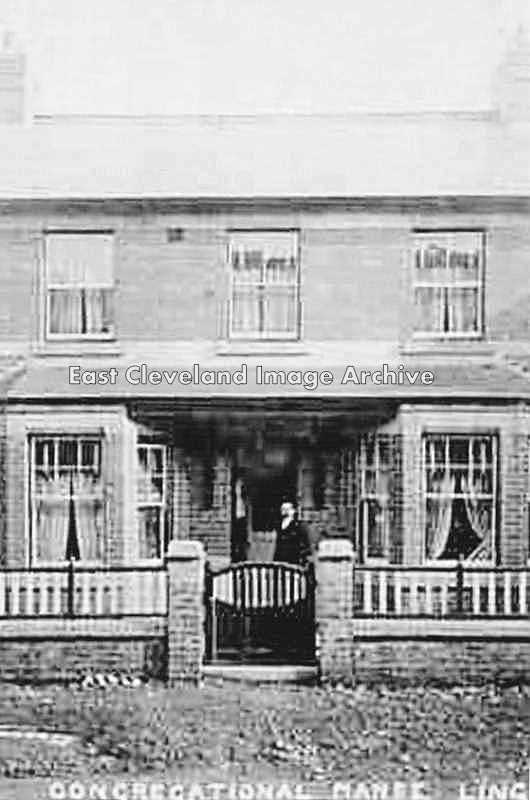
Outside the Congregational Manse Lingdale, newly built in 1907; the Reverend enjoys his new abode.
Image courtesy of Maurice Grayson.
|
|
||
 Outside the Congregational Manse Lingdale, newly built in 1907; the Reverend enjoys his new abode. Image courtesy of Maurice Grayson. 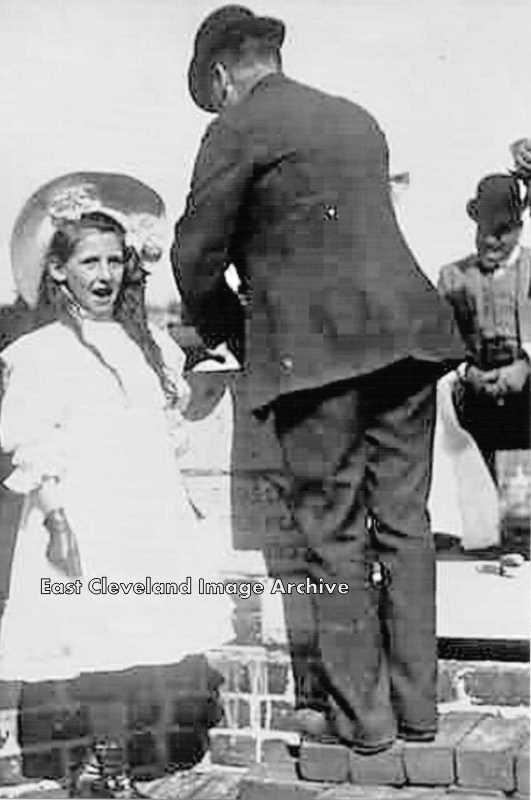 The occasion was the erection of the manse for the Congregational Minister, Reverend R. McKeith; in 1907 at Lingdale. The young lady is Eva Harrison, the gentleman is believed to be Joseph Bray, founder member of the Congregational Chapel in Lingdale. Image courtesy of Maurice Grayson. 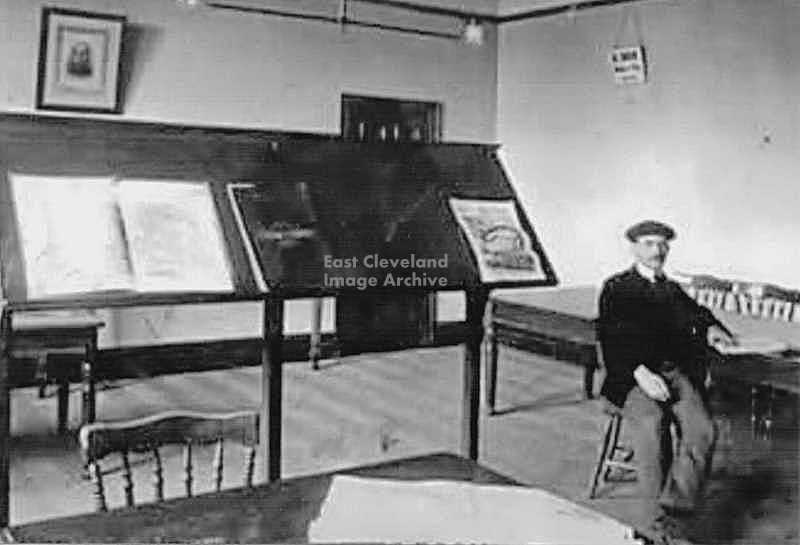 The Reading Room, Lingdale Institute; newspapers and other publications were provided for the workers many who could not afford a daily paper. The Reading Room kept them up to date with local and national news; with other books for enlightenment or knowledge. The image dates from about 1920. Image courtesy of Maurice Grayson. 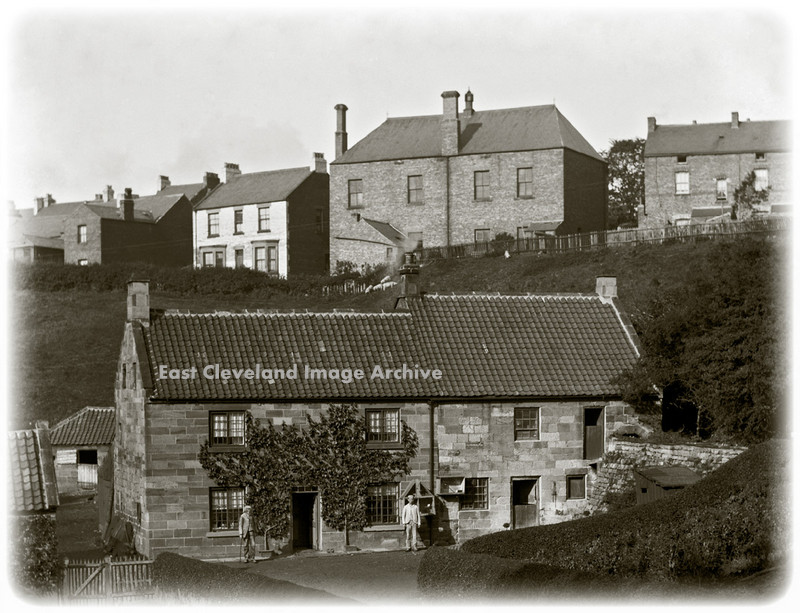 Photograph taken about 1900, We believe this is Jonathon Hartley the miller of Loftus Mill, (no mistaking him on the image), hence the name “Hartley’s field” for the adjacent pasture land. His widow still owned the Mill in 1905. Image kindly loaned by Michael Garbutt. 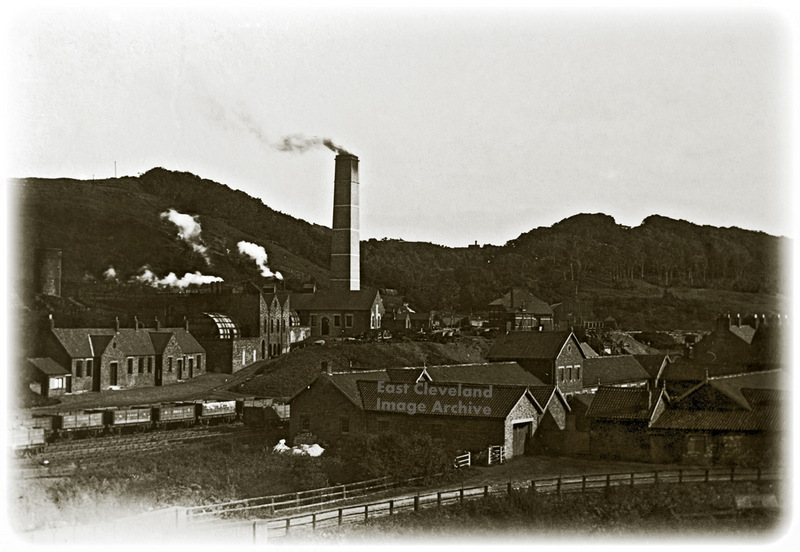 An early image of the mine; Deepdale valley has not been filled in with shale at the date of this photograph. The semi circular mine fan housing of possibly the Cooke ventilating fan, can be seen. The building and fan were replaced by a 30 foot diameter Waddel fan. David Richardson tells us: ”Taken sometime in the 1890′s, both the 1872 and 1874 Cook’s Fan houses are visible with the Compressor House and Boiler Plant Chimney behind them. A little away from those to the right is the Hauler House for the South Drift. On the hillside to the left of the photo is a large chimney which was the original furnace shaft for ventilating the North drift but was likely only used for a few years before the 1872 Cook’s fan took over.” Image courtesy of Michael Garbutt and many thanks to David Richardson for the update. 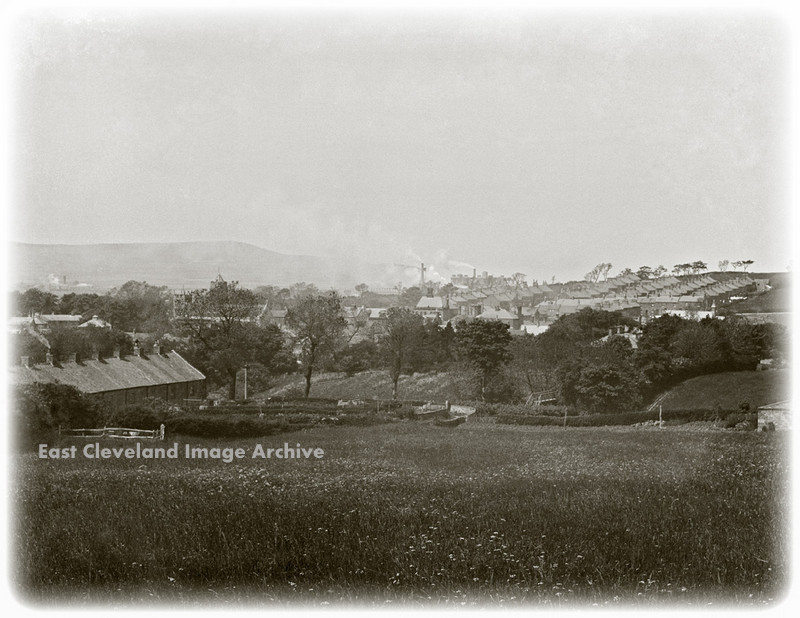 A late Victorian Image looking from South Loftus. In the distance centre can be seen Skinningrove furnaces. On the far left is the North Loftus Mine with steam rising from the engine. In the middle distance to the right of the bridge, thate field is now part of the Arlington estate. The wooden bridge over the railway was rebuilt in concrete. Image courtesy of Michael Garbutt. 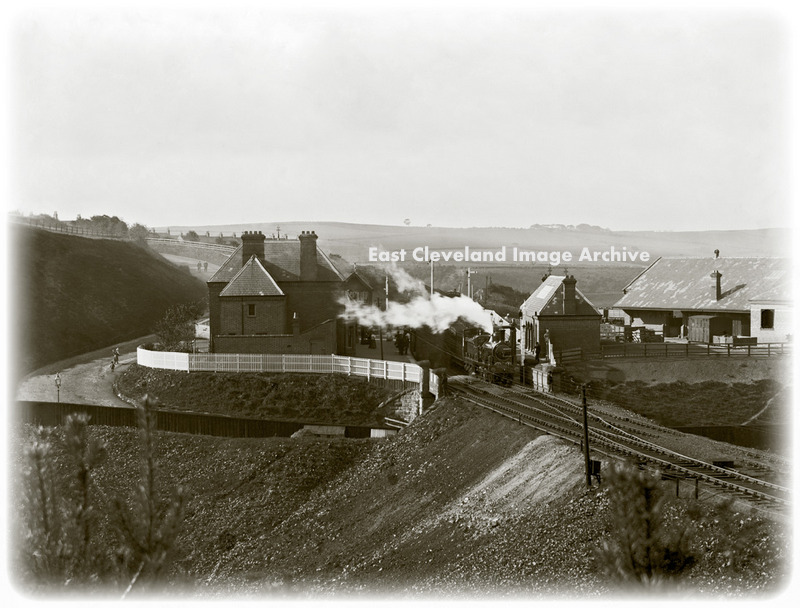 One for the train spotters! This early view of Loftus Station appears to date from just after the extension of the line to Whitby, with the Train on the Middlesbrough bound line obscured by steam. The embankment looks new with little vegetation growth. The engine looks to be an 0-6-0 tender locomotive, the position of the springs on the tender, and square spectacle windows in the cab could give a clue to the class of locomotive? Our expert viewers will give us their opinion, please. Gareth Spencer comments: “My first thought was the locomotive is likely to have been one of Edward Fletcher’s four-coupled passenger engines as modernized under McDonnell, which would account for the square spectacle windows, as seen running c.1900. I am not conversant with the details of Fletcher’s locomotives, but there were several classes of this type of passenger engine on the North Eastern Railway. One such engine of 1873 is preserved in original condition, plus one of the later Tennant 2-4-0s of 1885, which the locomotive in the photograph is definitely not.” and later added: “Most likely a member of the 901 class, one of 55 engines constructed between 1872 and 1882 by the NER at Gateshead works, by Beyer Peacock & Co, and also Neilson & Co. The extant example No.910, restored for the Stockton and Darlington Centenary, was a Gateshead product of April 1875 and has square spectacle windows. A photograph of No.908 shows a cab with round spectacles. McDonnell adopted Ramsbottom safety valves as standard and introduced them to the 901 class, which later received a new design of boiler and new cylinders, thus altering their appearance. The 1440 class (15 engines) was similar, they had 6ft. diameter driving wheels, whereas the 901 class had 7ft driving wheels. Source LNER Encyclopaedia (Internet).” Image Courtesy of Michael Garbutt; thanks to Gareth Spencer for the updates. 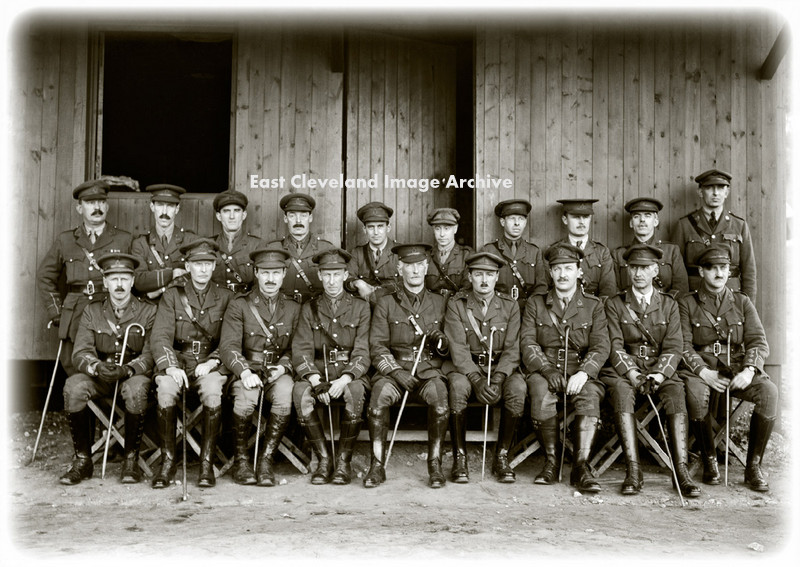 This group of officers appears a fine body of men, perhaps the Yorkshire Regiment? Again the building behind is intriguing. Can anybody assist with names and possible regisment? Ed Jones tells us: ”This is a group of officers. The battalion commander, a Lieutenant Colonel, is in the front centre. They are not in combat and it is probably a training camp pre-war or in the early years of WW1. It is hard to see the cap badge. It resembles a Royal Engineers Capbadge, but they do not have the grenade collar badge. The nearest guess is the York and Lancaster Regiment, which features a lion and a rose (“cat & cabbage”) in a laurel wreath.” Image courtesy of Michael Garbutt and many thanks to Ed Jones for the update. 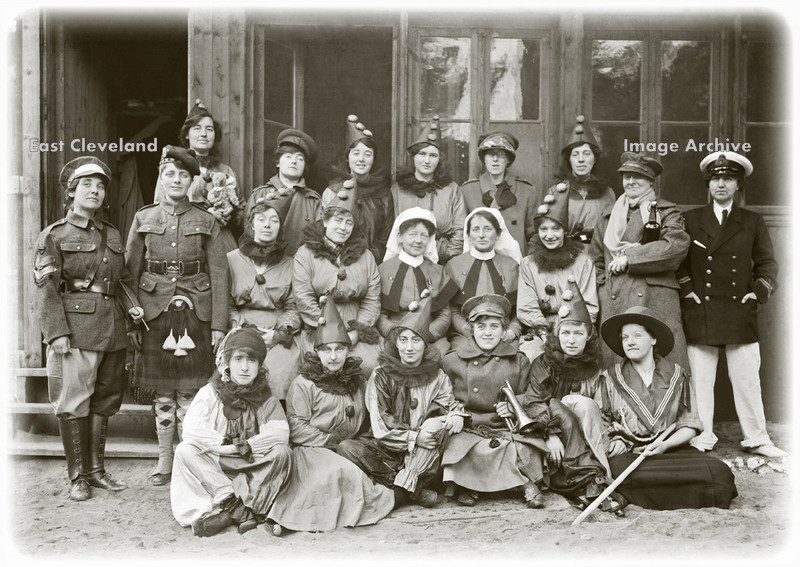 Obviously a fancy dress event, but all are ladies. The large bottle held by the lady second from right would seem insufficient for a party of this size. We are intrigued by the building behind them; does anybody recognise where it might have been? Image courtesy of Michael Garbutt. 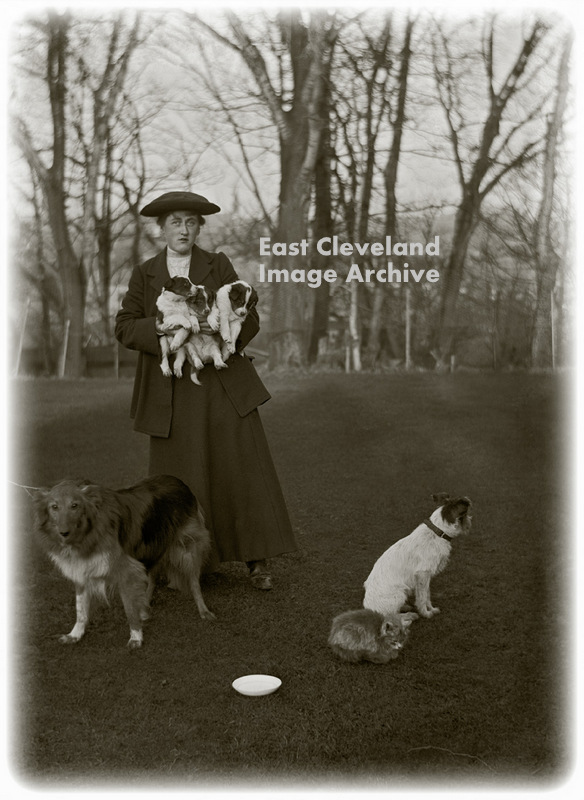 This lady certainly has her hands full. We presume the three pups(?) belong to the small terrier to the right. Whilst the cat appears to be totally disinterested. Help, please with names or even possibly the location. Image courtesy of Michael Garbutt. |
||
Recent Comments